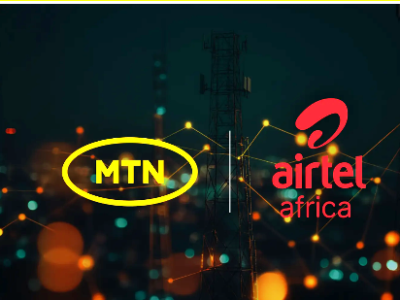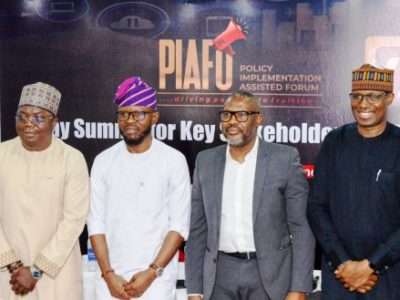By ‘Joel Omeike
I. Introduction
In the ever-shifting sands of the corporate world, a seismic transformation is underway. Picture this: A sleek, agile fintech company, known for its lightning-fast app payments and disruptive innovation, suddenly acquires a commercial banking license. Overnight, the game changes. The nimble tech startup now stands at the gates of the highly regulated, tradition-bound world of banking. A brave new frontier, yes—but also a potential minefield. And who, my friends, is tasked with guiding this expedition safely through the unknown? You guessed it: HR.
RELATED: Top industries facing cyber threats
This isn’t just a licensing deal; it’s a metamorphosis. For the HR department, this transition is not merely a logistical challenge but a strategic pivot that demands foresight, adaptability, and, dare I say, a touch of artistry. We’re talking about a complete transformation—from talent acquisition to cultural realignment, from regulatory compliance to performance metrics. The stakes? Nothing short of the company’s future.
For those of us in the senior HR trenches, this is our moment. A fintech-to-bank transition is not a routine adjustment; it’s a high-wire act. Get it right, and HR becomes the unsung hero, the architect of seamless transformation. Get it wrong, and…well, let’s not dwell on that.
So, what’s the plan? How do we, as HR leaders, turn this monumental challenge into a strategic victory? In the pages that follow, I’ll unravel the key implications, the hidden pitfalls, and the golden opportunities that lie in wait.
Buckle up, my friends. The future of HR in fintech is here, and it’s banking on us.
II. The Strategic Landscape
The fintech revolution didn’t just knock on the doors of traditional banking—it blew them wide open. In a world where speed, innovation, and customer-centricity are currency, fintech companies have reshaped the financial services industry with disruptive technologies and agile models. But disruption is only the beginning of the story.
Why, then, do these digital titans seek the coveted commercial banking license? On the surface, it seems counterintuitive. Why tether the lightning-fast fintech model to the regulatory anchors of traditional banking? The answer lies in evolution. With a banking license, a fintech company gains access to new revenue streams—deposits, loans, and a suite of financial products—that unlock long-term growth. It’s not just about staying relevant; it’s about becoming indispensable.
Yet, with great power comes great responsibility. The moment that license is acquired, the fintech company steps into a world governed by rules, scrutiny, and expectation. Compliance becomes non-negotiable. Trust becomes the currency. And here lies the paradox: A fintech’s greatest strengths—speed, innovation, and risk-taking—must now be tempered with the prudence, precision, and reliability of a bank.
Enter HR, stage left.
As senior HR leaders, we’re not just bystanders in this transformation. We’re the architects, the strategists, and sometimes, the fixers. Our role is no longer confined to managing talent or ensuring compliance. We’re now responsible for aligning two seemingly opposing worlds: the agile, boundary-pushing ethos of fintech and the meticulous, regulation-driven culture of banking.
This transition isn’t merely operational; it’s cultural. It demands a shift in mindset from every corner of the organization. From the developers who once thrived on rapid iterations to the customer service teams who must now navigate heightened expectations, everyone needs to adapt. And that’s where the real challenge—and opportunity—lies.
The strategic landscape is complex, but it’s also ripe with potential. As we peel back the layers in this newsletter, we’ll explore the critical areas HR must address: talent acquisition, upskilling, regulatory compliance, cultural integration, and more. Each facet offers both a challenge and a chance to redefine our role in the organization’s future.
This isn’t just another corporate shift. It’s a transformation that will test our mettle as HR leaders. Are you ready to lead the charge? The journey has just begun.
III. Key Implications for HR Departments
When a fintech company steps into the banking arena, the HR department doesn’t just face a new set of tasks—it faces an entire paradigm shift. The implications reach deep into the core of what we do, from talent strategies to cultural transformation. Let’s dive into the key areas where HR will need to steer the ship with precision, strategy, and a touch of boldness.
1. Talent Acquisition: Building the Right Team
The game has changed. The team that excelled in a fast-paced fintech environment may not be fully equipped to navigate the complexities of banking. The first order of business? Identify the gaps.
- New Talent Needs: Banking-specific roles like compliance officers, risk managers, credit analysts, and relationship managers become critical.
- Balancing Expertise: It’s not just about hiring bankers; it’s about finding professionals who understand both worlds—those who can bridge innovation and regulation.
- Recruitment Strategies: Tap into new talent pools. Consider industry partnerships, targeted headhunting, and perhaps even poaching from traditional banks (yes, I said it).
HR Godfather’s Tip: Don’t just look for skills; look for adaptability. The ideal candidate is one who thrives in transformation.
2. Training & Development: Bridging the Skills Gap
Your existing workforce is your biggest asset—and your biggest challenge. Transitioning from fintech to banking requires upskilling at scale.
- Compliance Training: Non-negotiable. Banking regulations, anti-money laundering (AML), KYC policies—every employee must understand these.
- Product Knowledge: Develop training modules focused on banking products and services. Even your tech teams need to know the business they’re coding for.
- Soft Skills: Customer trust is everything in banking. Invest in customer service and relationship management training.
HR Godfather’s Tip: Use a blended learning approach—mix traditional training with interactive, tech-driven modules. Keep it engaging, or lose them.
3. Regulatory Compliance: Elevating Standards
Welcome to the world of audits, inspections, and regulatory scrutiny. Compliance isn’t a department; it’s a culture.
- Understanding the Landscape: Familiarize yourself with the regulations that govern banking. It’s a complex web, but HR must be fluent in it.
- Compliance Culture: Integrate compliance into every level of the organization. This isn’t about ticking boxes; it’s about building habits.
- Continuous Learning: Regulations evolve. So must your training programs.
HR Godfather’s Tip: Embed compliance into performance metrics. Make it everyone’s responsibility, not just the compliance team’s.
4. Cultural Transformation: Integrating Banking Values
This is the real battlefield. Shifting from a fintech culture to a banking culture isn’t about changing policies; it’s about changing mindsets.
- Identify Core Values: What values from your fintech roots should you preserve? What banking values must you adopt?
- Lead from the Top: Cultural change starts at the leadership level. Ensure your leaders embody the new culture.
- Communication is Key: Be transparent. Explain the “why” behind the changes, and listen—really listen—to employee concerns.
HR Godfather’s Tip: Create a narrative. People connect with stories, not policies. Make them part of the journey.
5. Compensation & Benefits: Attracting and Retaining Talent
The banking world is competitive. Your compensation structure needs to reflect that.
- Benchmarking: Compare your compensation packages with those in the banking sector. Adjust accordingly.
- Performance Incentives: Introduce banking-specific KPIs and reward structures. Align incentives with regulatory and performance goals.
- Retention Strategies: Identify key talent (both existing and new) and implement retention plans. Losing critical talent during a transition can be catastrophic.
HR Godfather’s Tip: Money matters, but so does purpose. Banking comes with a sense of societal responsibility. Use that to your advantage.
6. Performance Management: Realigning Metrics
The metrics that drove fintech success won’t necessarily apply in a banking environment. It’s time to recalibrate.
- New KPIs: Focus on metrics like compliance adherence, risk management, customer satisfaction, and regulatory audit outcomes.
- Review Systems: Update performance review forms to reflect the new priorities. Ensure alignment across all levels.
- Data-Driven Insights: Leverage analytics to monitor performance and compliance in real-time.
HR Godfather’s Tip: Performance management isn’t just about accountability; it’s about alignment. Ensure every employee understands how their role contributes to the bigger picture.
Further Thoughts:
These aren’t just challenges; they’re opportunities to redefine HR’s role in the organization. This transition is a proving ground—a chance to demonstrate the strategic value HR brings to the table. Embrace it, and you won’t just support the transformation; you’ll lead it.
The question isn’t whether your company can navigate this shift. The question is whether HR will rise to the occasion. I have a feeling you will.
IV. HR’s Role in Driving Organizational Success
In this high-stakes transformation from fintech disruptor to regulated banking powerhouse, HR isn’t just a supporting player—it’s the architect of success. Our role extends beyond talent management and compliance; we’re the stewards of strategy, culture, and change. Let’s break down how HR can drive organizational success during this pivotal shift.
1. Championing Change Management
The transition to a banking environment isn’t just a structural change; it’s a psychological one. Fear of the unknown, resistance to new processes, and cultural misalignment are real threats. This is where HR must step up as the guiding force.
- Strategic Communication: Craft a clear, compelling narrative that explains why the transition matters. Align every message with the company’s vision.
- Engagement Initiatives: Foster open dialogue. Create platforms for employees to voice concerns, ask questions, and share feedback.
- Change Agents: Identify and empower influencers within the organization to champion the transition. These change agents will be the bridge between leadership and employees.
HR Godfather’s Tip: Transparency breeds trust. Keep employees in the loop at every stage of the transformation, no matter how messy it gets.
2. Redefining Leadership Development
As the company’s mission evolves, so must its leadership. The leaders who thrived in a fintech environment may need to adopt new mindsets and skills to succeed in the banking sector.
- Leadership Competency Models: Develop models that blend fintech innovation with banking prudence. Focus on competencies like risk management, regulatory knowledge, and strategic foresight.
- Executive Training Programs: Offer specialized training for senior leaders. They need to understand not only banking operations but also how to lead teams through complex, regulated environments.
- Accountability and Support: Hold leaders accountable for driving cultural change, but also provide them with the tools and support they need.
HR Godfather’s Tip: The top sets the tone. If your leadership embodies the new vision, the rest will follow.
3. Aligning Organizational Culture with Strategic Goals
Culture isn’t just a buzzword—it’s the invisible hand that shapes behavior, decisions, and performance. HR’s mission is to weave a culture that balances fintech agility with banking reliability.
- Core Values Audit: Identify which fintech values should be preserved (innovation, customer-centricity) and which banking values need to be introduced (compliance, risk aversion).
- Cultural Integration Programs: Host workshops, town halls, and team-building activities that reinforce the new cultural norms.
- Recognition Systems: Align rewards and recognition with behaviors that reflect the desired culture. Celebrate wins that showcase cultural alignment.
HR Godfather’s Tip: Culture isn’t built in boardrooms; it’s built in breakrooms. Get the small things right, and the big things will follow.
4. Building an Agile, Compliant Workforce
The workforce must be both agile and compliant—a delicate balance that HR must orchestrate.
- Cross-Functional Training: Encourage employees to develop a dual skill set. Tech teams should understand banking regulations; compliance teams should grasp fintech innovation.
- Continuous Learning Platforms: Implement learning management systems (LMS) that offer on-demand training modules. This ensures that employees stay updated with evolving regulations and industry trends.
- Performance Alignment: Embed compliance and adaptability into performance reviews. Make it clear that both are equally valued.
HR Godfather’s Tip: Flexibility and structure can coexist. The key lies in making continuous learning a cultural norm, not a corporate mandate.
5. Strengthening Risk and Compliance Frameworks
HR’s role in compliance isn’t just about training—it’s about embedding a risk-aware mindset into the organizational DNA.
- Compliance Champions: Designate compliance champions within each department to act as liaisons between HR and operational teams.
- Behavioral Assessments: Conduct regular assessments to ensure that employees are not only aware of compliance requirements but are also committed to them.
- Ethics and Integrity Programs: Develop programs that go beyond rules and regulations, focusing on ethical decision-making and integrity.
HR Godfather’s Tip: A strong compliance culture starts with ethics. When employees understand the why, they’re more likely to follow the how.
6. Future-Proofing Talent Strategy
The fintech-to-bank transition isn’t the endgame—it’s a stepping stone. HR must anticipate future challenges and opportunities, ensuring the organization remains resilient.
- Workforce Planning: Analyze future talent needs based on long-term business goals. Identify skills that will be critical in the next 3-5 years.
- Succession Planning: Develop a pipeline of future leaders who understand both fintech innovation and banking rigor.
- Innovation Incubators: Create internal programs that encourage employees to develop and pitch new ideas, ensuring that innovation doesn’t get lost in the transition.
HR Godfather’s Tip: The best way to predict the future is to prepare for it. Stay two steps ahead, and you’ll always lead the pack.
Further Thought:
HR is not merely a cog in the machine of organizational change—it’s the engine. As your company navigates this transformation, remember this: The strength of your HR strategy will determine the success of the entire journey. This is our moment to rise, to lead, and to leave an indelible mark on the future of the organization.
In the words of TheHRGodfather: Change is inevitable. Success is optional. HR makes the difference.
V. Real-World Case Studies & Insights
To truly grasp the magnitude of what it means for an HR department when a fintech company acquires a banking license, we must look beyond theory and into the trenches of organizations that have walked this path. These real-world case studies provide invaluable lessons—tales of triumph, trials, and transformation. Let’s explore a few notable examples and extract insights that can guide our own journey.
1. Square’s Transformation into Block, Inc.
The Journey: Square, known for revolutionizing mobile payments, acquired a banking license to offer financial services through Square Financial Services. This move transformed Square from a payment processor into a fully-fledged financial institution, now known as Block, Inc.
Key HR Challenges and Solutions:
- Talent Realignment: Square needed to expand its workforce to include banking professionals. HR introduced targeted hiring campaigns and partnered with banking industry headhunters to bring in the right expertise.
- Cultural Shift: Balancing the fintech culture of innovation with the regulatory rigor of banking posed challenges. HR launched a “One Block” initiative, integrating fintech agility with banking discipline through training and internal communication campaigns.
- Compliance Training: Extensive compliance training programs were rolled out across all departments, ensuring that even tech teams understood the regulatory environment.
Insight: Integrating banking expertise doesn’t mean losing fintech dynamism. HR must create an environment where both can coexist, fostering innovation within a framework of compliance.
2. Ant Financial’s Global Expansion and Regulatory Challenges
The Journey: Ant Financial, the fintech arm of Alibaba, sought to expand globally by acquiring financial licenses in multiple countries. The regulatory landscape in each market posed unique challenges, especially as Ant transitioned from a tech-driven platform to a regulated financial entity.
Key HR Challenges and Solutions:
- Global Compliance Workforce: HR had to build localized compliance teams in each country. This required a strategic talent acquisition plan and a global mobility program to transfer expertise.
- Cultural Integration: With operations spanning different regulatory environments, HR focused on creating a unified compliance culture while respecting local norms.
- Leadership Adaptability: Senior leaders underwent intensive cross-cultural training to understand the regulatory expectations of each market.
Insight: Expanding into regulated markets requires a localized HR approach. A one-size-fits-all strategy doesn’t work; cultural and regulatory nuances must shape your talent strategy.
3. Revolut’s Banking License Journey
The Journey: Revolut, a digital banking app, secured banking licenses in various European markets. Transitioning from a fintech startup to a regulated bank involved significant changes, particularly for its HR department.
Key HR Challenges and Solutions:
- Upskilling Existing Talent: Revolut focused heavily on training existing employees rather than replacing them. Their “Compliance First” program ensured that all staff, from engineers to marketers, understood banking regulations.
- Performance Metrics Overhaul: HR realigned performance metrics to prioritize regulatory compliance and customer trust, moving away from purely growth-focused KPIs.
- Employee Engagement: The transition period was turbulent, with increased scrutiny and workload. HR implemented wellness programs to support employees through the change.
Insight: Training isn’t just a checkbox—it’s a strategic tool. Investing in your existing workforce can foster loyalty and ensure a smoother transition.
4. Paytm Payments Bank’s Regulatory Evolution
The Journey: Paytm, a leading digital wallet company in India, launched Paytm Payments Bank. This move required a complete overhaul of internal processes to meet stringent banking regulations.
Key HR Challenges and Solutions:
- Compliance-Driven Culture: Paytm’s HR team spearheaded the creation of a compliance-driven culture, embedding regulatory adherence into the company’s core values.
- Talent Acquisition vs. Development: While hiring banking experts was crucial, HR balanced this with internal development programs to upskill fintech talent.
- Stakeholder Communication: HR ensured transparent communication with all employees, explaining how the banking transition would impact their roles and career paths.
Insight: Transparency and communication are as critical as compliance. Employees need to understand their role in the bigger picture to fully buy into the transition.
Key Takeaways for HR Leaders
These case studies reveal common themes that any HR leader navigating a fintech-to-bank transition should heed:
- Talent Strategy is Critical: Identify the talent gaps early and address them through a mix of strategic hiring and upskilling.
- Culture Must Evolve: Merging fintech innovation with banking compliance requires a deliberate cultural transformation.
- Training is Non-Negotiable: Compliance training isn’t just for the compliance team—it’s for everyone. Make it engaging, relevant, and continuous.
- Leadership Sets the Tone: Your leaders must embody the new values and expectations. Invest in their development.
- Communication is the Glue: In times of transformation, employees crave clarity. Be transparent, consistent, and empathetic in your communication.
Further Thought:
These companies didn’t just survive the transition—they thrived. They turned what seemed like a regulatory burden into a competitive advantage. And at the heart of their success? A strategic, agile HR department that saw beyond the challenges and envisioned the opportunities.
As we face our own fintech-to-bank journey, let these insights be our compass. After all, if they did it, so can we. And perhaps, with the right moves, we can do it even better.
VI. Action Plan for HR Leaders
The path from fintech disruptor to licensed bank is laden with complexities, but for HR leaders, it’s also a landscape of immense opportunity. Success in this transformation hinges on our ability to act strategically, anticipate challenges, and drive change with precision. Here’s a step-by-step action plan to guide HR leaders through this pivotal journey, ensuring your organization not only transitions smoothly but emerges stronger.
1. Conduct a Comprehensive Skills Gap Analysis
Objective: Identify the capabilities needed for the banking transition and assess current talent.
- Audit Existing Talent: Map out current roles, skills, and competencies. Determine who has transferable skills and who may need upskilling or reskilling.
- Identify Critical Banking Roles: Pinpoint positions essential for banking operations, such as compliance officers, risk managers, and auditors.
- Develop a Skills Matrix: Create a matrix that highlights gaps and overlaps, providing a clear view of where to focus recruitment or training efforts.
HR Godfather’s Tip: Knowledge is power. The more you understand your current talent landscape, the better you can plan for the future.
2. Build a Targeted Recruitment Strategy
Objective: Attract top talent with banking expertise while maintaining your fintech edge.
- Engage Specialized Recruiters: Partner with agencies experienced in banking talent acquisition. Their networks can accelerate the hiring process.
- Employer Branding Campaigns: Position your company as an exciting place for banking professionals. Emphasize the opportunity to shape a new kind of bank—innovative, agile, and customer-focused.
- Internal Mobility Programs: Encourage current employees to transition into new roles. Offer clear pathways and support for those interested in pivoting their careers.
HR Godfather’s Tip: You’re not just recruiting employees—you’re recruiting ambassadors for your new vision. Choose wisely.
3. Develop Robust Training and Development Programs
Objective: Ensure all employees understand the banking environment and are equipped for their new roles.
- Compliance Training for All: Make regulatory training mandatory, engaging, and continuous. Use real-world scenarios and case studies to drive home the importance of compliance.
- Leadership Development: Design specialized programs for leaders to navigate the complexities of a regulated environment. Focus on risk management, ethics, and strategic decision-making.
- Cross-Training Initiatives: Foster a culture of learning by encouraging cross-departmental training. For instance, tech teams should understand regulatory frameworks, and compliance teams should grasp fintech innovations.
HR Godfather’s Tip: Training isn’t a one-time event—it’s a cultural shift. Make learning an integral part of daily operations.
4. Redefine Performance Metrics and Incentives
Objective: Align performance management with new strategic goals and regulatory expectations.
- Update KPIs: Introduce new metrics that reflect both fintech agility and banking rigor. For example, measure compliance adherence alongside innovation.
- Incentivize the Right Behaviors: Reward employees who embody the new culture—those who balance risk awareness with customer-centric thinking.
- Regular Performance Reviews: Conduct more frequent reviews during the transition period to ensure alignment and address any gaps quickly.
HR Godfather’s Tip: What gets measured gets managed. Align your metrics with your mission, and performance will follow suit.
5. Strengthen Organizational Culture
Objective: Blend fintech’s innovation-driven culture with banking’s compliance-focused mindset.
- Core Values Alignment: Reassess your company’s core values. Identify which ones to preserve and which new ones to introduce.
- Cultural Integration Workshops: Host workshops that help employees understand and embrace the evolving culture. Use storytelling to connect the past, present, and future.
- Recognition Programs: Highlight and reward employees who demonstrate the desired cultural traits, reinforcing the behaviors you want to see.
HR Godfather’s Tip: Culture eats strategy for breakfast. Build a culture that’s strong enough to weather any transition.
6. Establish Clear Communication Channels
Objective: Ensure transparency, reduce uncertainty, and foster trust throughout the transformation.
- Create a Communication Roadmap: Plan what messages need to be delivered, when, and by whom. Keep employees informed at every stage.
- Two-Way Communication: Establish platforms where employees can ask questions and provide feedback. Town halls, Q&A sessions, and anonymous surveys work well.
- Leadership Visibility: Encourage leaders to be visible and accessible. Employees need to see and hear from those steering the ship.
HR Godfather’s Tip: In the absence of information, rumors thrive. Be the source of truth your employees trust.
7. Focus on Employee Well-being and Engagement
Objective: Support employees through the stress and uncertainty of transformation.
- Wellness Programs: Introduce mental health initiatives and stress management resources.
- Engagement Surveys: Regularly assess employee sentiment and address concerns proactively.
- Recognition and Celebration: Celebrate milestones, both big and small. Acknowledge the hard work employees are putting in.
HR Godfather’s Tip: Transformation is a marathon, not a sprint. Keep your team motivated and resilient.
8. Prepare for Ongoing Regulatory Audits and Compliance Checks
Objective: Ensure the organization remains audit-ready at all times.
- Regular Mock Audits: Conduct internal audits to identify potential issues before regulators do.
- Compliance Champions: Appoint champions in each department who are responsible for upholding compliance standards.
- Documentation and Reporting: Ensure all processes are well-documented and easily accessible for audits.
HR Godfather’s Tip: Compliance isn’t a box to tick—it’s a mindset. Foster a culture where doing the right thing becomes second nature.
Further Thought:
HR leaders, this is your moment. The fintech-to-bank transition is more than a regulatory shift; it’s a transformation that will define your organization’s future. With a strategic action plan, unwavering focus, and relentless commitment to excellence, you can lead this change—not just manage it.
Remember, the journey ahead isn’t easy, but as TheHRGodfather would say: In the crucible of change, true leadership is forged. Step up, seize the moment, and make history.
VII. Conclusion
As the curtain falls on this transformative journey from fintech pioneer to licensed bank, the role of HR stands at center stage. This isn’t merely a change in operational structure or a pivot in business focus; it’s a metamorphosis that will define the future of your organization. The stakes are high, but so are the rewards. For HR leaders, this is not just a challenge—it’s a legacy-building opportunity.
Think of it as orchestrating a symphony. Each department, from compliance to customer service, plays a unique instrument, and your role is to ensure they harmonize under the grand vision of becoming a bank. You’re not just managing change; you’re architecting a new organizational identity. The talent you nurture, the culture you cultivate, and the systems you implement will determine whether this transformation is a fleeting ambition or a sustainable success story.
Embrace the Duality: Your challenge is to balance the innovative spirit of fintech with the structured discipline of banking. These two worlds seem like opposites, but in their fusion lies the formula for industry leadership. Innovation without control is chaos; regulation without agility is stagnation. Your job is to bridge that divide.
People First, Always: In the whirlwind of regulatory checklists, strategic plans, and compliance audits, remember this: transformation is ultimately about people. It’s your employees who will bring this vision to life. They need clarity, direction, and above all, belief. As HR leaders, your most powerful tool isn’t policy—it’s influence. Foster trust, inspire commitment, and champion the human element of this journey.
Lead with Vision and Resolve: This transition will test your leadership like never before. There will be moments of doubt, resistance, and complexity. But remember, leadership isn’t about having all the answers; it’s about guiding your team through the questions. Stay focused on the bigger picture, and don’t get lost in the weeds of transition.
TheHRGodfather’s Final Word: This is more than a corporate milestone; it’s a defining chapter. Years from now, when you look back, you won’t remember the endless meetings or the late-night compliance reviews. You’ll remember the people you empowered, the culture you built, and the future you shaped.
So, step boldly into this new era. Lead with purpose, act with precision, and remember—the future belongs to those who dare to transform.
The challenge is here. The opportunity is yours. Make it count.
VIII. Call to Action
The future isn’t something you wait for; it’s something you create. As HR leaders, you stand at the forefront of one of the most significant transformations your organization will ever undertake. The path is uncharted, the stakes are high, and the challenges are real. But so is the opportunity.
Now is the time to act.
- Assess your readiness: Take stock of your talent, culture, and processes. Where are the gaps? What needs to change?
- Engage your teams: Transformation isn’t a top-down mandate; it’s a collective journey. Bring your people along. Communicate transparently, listen actively, and foster a culture of collaboration.
- Build your roadmap: Don’t navigate this journey blindly. Develop a strategic action plan with clear milestones, accountability, and measures of success.
- Invest in your people: Equip them with the skills, knowledge, and mindset they need to thrive in this new environment. Remember, the true power of transformation lies in your workforce.
Join the Conversation You’re not in this alone. Connect with other senior HR leaders who are navigating similar transformations. Share insights, learn from their experiences, and contribute to a growing body of knowledge that’s shaping the future of HR.
📢 Comment below: What’s the biggest challenge you foresee in a fintech-to-bank transition? Let’s build a community of shared wisdom and support.
🔗 Follow me for more insights: Stay ahead of the curve with the latest strategies and case studies on organizational transformation. Connect with me or send me an inbox message. You can also contact P4PE Institute here.
TheHRGodfather’s Challenge to You: Transformation isn’t a passive process; it demands bold action and fearless leadership. Are you ready to step up, lead with vision, and make history?
The time to lead is now. The future is calling—will you answer?
‘Joel Omeike. The HR Godfather || Trusted Advisor || Certified Business Value Builder || Global HR Professional || Speaker || Trainer & Coach || Author || Data Analyst || Investor || Incurable Serial Entrepreneur































